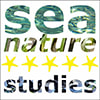Marine Ecological Assessment Research
The influence of a non-native species on habitat structure and functioning of benthic systems: case study of an introduced lugworm in the Solent.
The pervading opinion with regard to non-native species is that they are having or, will have, a negative impact on both biodiversity and ecosystems to a greater or lesser extent, with the emphasis usually on the former (Davis et al., 2011). Increasingly, this position is being challenged by ecologists (Bonanno, 2016; Davis et al., 2011; Hettinger, 2014; Katsanevakis et al., 2014; Pereyra, 2016; Schlaepfer et al., 2011; and, Zwerschke et al., 2016). The question is to what extent, if any, non-native species actually help maintain ecosystem structure and function and thereby, support ecological resilience to future environmental change. The identified presence of a species of lugworm new to UK shores, in conjunction with native lugworm habitat, presents a unique opportunity to study the effect of a benthic non-native ecosystem engineer species on ecologically valuable UK intertidal habitats.
References
Bonanno, G. (2016). Alien species: to remove or not to remove? That is the question. Environmental Science & Policy, Volume 59, Pages 67–73.
Davis, M.A., Chew, M.K., Hobbs, R.J., Lugo, A.E., Ewel, J.J., Vermeij, G.J., Brown, J.H., Rosenzweig, M.L., Gardener, M.R., Carroll, S.P., Thompson, K., Pickett, S.T., Stromberg, J.C., Del Tredici, P., Suding, K.N., Ehrenfeld, J.G., Grime, J.P., Mascaro, J. and Briggs, J.C. (2011). Don't judge species on their origins. Nature, 474, 153–154. doi: 10.1038/474153a.
Hettinger, N. (2014). Non-native species. In: Ethics, Science, Technology and Engineering: A Global Resource, 2nd Edition. Editor Holbrook, J.B., 271-274, Macmillan Reference USA. ISBN-10: 002866213X.
Katsanevakis, S., Wallentinus, I., Zenetos, A., Leppäkoski, E., Çinar, M.E., Oztürk, B., Grabowski, M., Golani, D. & Cardoso, A.C. (2014). Impacts of marine invasive alien species on ecosystem services and biodiversity: a pan-European review. Aquatic Invasions, 9, 391–423.
Pereyra, P. J. (2016). Revisiting the use of the invasive species concept: An empirical approach. Austral Ecology, doi: 10.1111/aec.12340.
Schlaepfer, M. A., Sax, D. F. and Olden, J. D. (2011). The potential conservation value of non-native species. Conservation Biology, 25: 428–437. doi: 10.1111/j.1523-1739.2010.01646.x.
Zwerschke, N., Emmerson, M. C., Roberts, D., and O'Connor, N. E. (2016). Benthic assemblages associated with native and non-native oysters are similar. Marine Pollution Bulletin, Volume 111, Issues 1–2, Pages 305-310. ISSN 0025-326X.
The pervading opinion with regard to non-native species is that they are having or, will have, a negative impact on both biodiversity and ecosystems to a greater or lesser extent, with the emphasis usually on the former (Davis et al., 2011). Increasingly, this position is being challenged by ecologists (Bonanno, 2016; Davis et al., 2011; Hettinger, 2014; Katsanevakis et al., 2014; Pereyra, 2016; Schlaepfer et al., 2011; and, Zwerschke et al., 2016). The question is to what extent, if any, non-native species actually help maintain ecosystem structure and function and thereby, support ecological resilience to future environmental change. The identified presence of a species of lugworm new to UK shores, in conjunction with native lugworm habitat, presents a unique opportunity to study the effect of a benthic non-native ecosystem engineer species on ecologically valuable UK intertidal habitats.
References
Bonanno, G. (2016). Alien species: to remove or not to remove? That is the question. Environmental Science & Policy, Volume 59, Pages 67–73.
Davis, M.A., Chew, M.K., Hobbs, R.J., Lugo, A.E., Ewel, J.J., Vermeij, G.J., Brown, J.H., Rosenzweig, M.L., Gardener, M.R., Carroll, S.P., Thompson, K., Pickett, S.T., Stromberg, J.C., Del Tredici, P., Suding, K.N., Ehrenfeld, J.G., Grime, J.P., Mascaro, J. and Briggs, J.C. (2011). Don't judge species on their origins. Nature, 474, 153–154. doi: 10.1038/474153a.
Hettinger, N. (2014). Non-native species. In: Ethics, Science, Technology and Engineering: A Global Resource, 2nd Edition. Editor Holbrook, J.B., 271-274, Macmillan Reference USA. ISBN-10: 002866213X.
Katsanevakis, S., Wallentinus, I., Zenetos, A., Leppäkoski, E., Çinar, M.E., Oztürk, B., Grabowski, M., Golani, D. & Cardoso, A.C. (2014). Impacts of marine invasive alien species on ecosystem services and biodiversity: a pan-European review. Aquatic Invasions, 9, 391–423.
Pereyra, P. J. (2016). Revisiting the use of the invasive species concept: An empirical approach. Austral Ecology, doi: 10.1111/aec.12340.
Schlaepfer, M. A., Sax, D. F. and Olden, J. D. (2011). The potential conservation value of non-native species. Conservation Biology, 25: 428–437. doi: 10.1111/j.1523-1739.2010.01646.x.
Zwerschke, N., Emmerson, M. C., Roberts, D., and O'Connor, N. E. (2016). Benthic assemblages associated with native and non-native oysters are similar. Marine Pollution Bulletin, Volume 111, Issues 1–2, Pages 305-310. ISSN 0025-326X.
